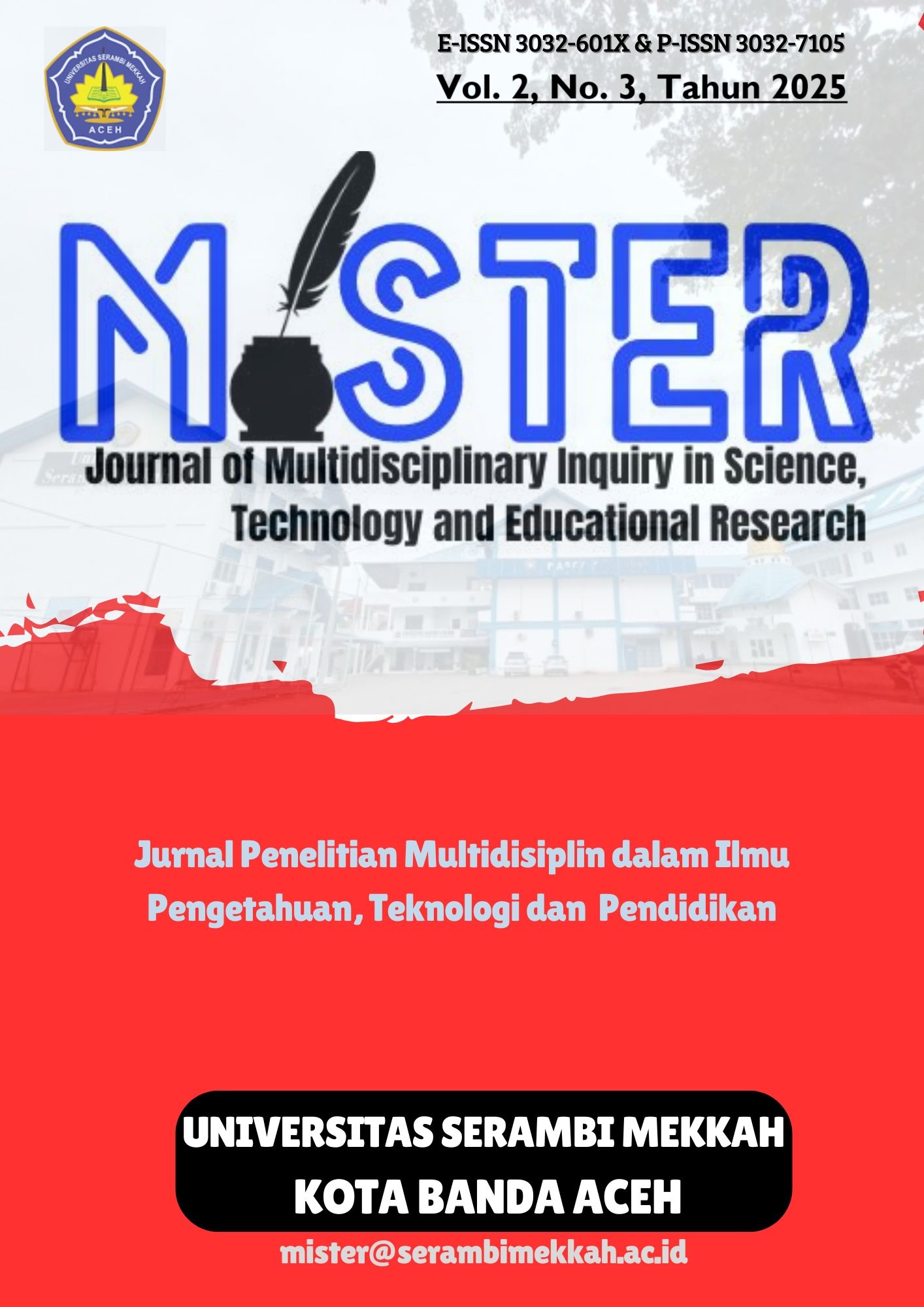Syarat dan Mekanisme Impeachment Presiden dan/atau Wakil Presiden: Perspektif Hukum Konstitusi Indonesia
Main Article Content
Abstract
This study discusses the requirements and mechanisms for the Impeachment of the President and/or Vice President of the Republic of Indonesia from the perspective of Indonesian constitutional law, focusing on the possibility of impeaching Vice President Gibran Rakabuming Raka. In the 1945 Constitution of the Republic of Indonesia, the mechanism for the Impeachment of the President and/or Vice President is strictly regulated through Articles 7A and 7B, which require serious violations of the law such as treason against the state, corruption, bribery, other serious crimes, or disgraceful acts. The dismissal process begins with a proposal from the DPR, continues with an examination in the DPR then continues to the Constitutional Court, and ends with a decision by the MPR. Until now, there has been no legal evidence or official process stating that Vice President Gibran has met the requirements to be dismissed according to the constitution. Thus, dismissal can only be carried out if all stages of law and constitutional proof have been met. This study emphasizes the importance of maintaining the supremacy of the constitution in the Indonesian constitutional law system.
Article Details

This work is licensed under a Creative Commons Attribution-ShareAlike 4.0 International License.
References
A. Sulistiani. (2018). Impeachment Presiden (Studi Perbandingan Ketatanegaraan Indonesia dan Ketatanegaraan Islam). Jurnal Al-Dastur, Vol. 1No. (1) Hal. 19
Beragam Respons soal Munculnya Desakan Pemberhentian Gibran sebagai Wapres" selengkapnya https://www.detik.com/bali/berita/d-7887595/beragam-respons-soal-munculnya-desakan-pemberhentian-gibran-sebagai-wapres.
D.G. Kasenda, (2019). Pemberhentian Presiden Dalam Masa Jabatan Menurut Uud 1945. Jurnal Ilmu Hukum Tambun Bungai, Vol. 4 No. (1), Hal. 382–399.
F. Arief, E. Soponyono, & H. Asy’ari, (2016). Kebijakan Pemakzulan Presiden Dan Wakil Presiden Atas Dasar Tindak Pidana Pengkhianatan Terhadap Negara Dalam Kerangka Good Governance (Kajian Pasca Amandemen Undang-Undang Dasar 1945). Law Reform, Vol. 12, No. (2), Hal. 222.
H. Hufron, (2016). Perbuatan Tercela sebagai Alasan Pemakzulan Presiden Dan/atau Wakil Presiden. DIH: Jurnal Ilmu Hukum, Vol. 12 No. (23), Hal. 64–74.
Hamdan Zoelva, (2014). Impeachment Presiden: Alasan Tindak Pidana Pemberhentian Presiden Menurut UUD 1945. Jakarta: Konstitusi Press
Jimly Asshiddiqie, (2005). Mekanisme Impeachment dan Hukum Acara Mahkamah Konstitusi. Kerjasama Mahkamah Konstitusi Republik Indonesia dengan Konrad Adenauer Stiftung, Jakarta,Laporan Penelitian
Kristiyanto, E. N. (2013). Pemakzulan Presiden Republik Indonesia Pasca Amandemen UUD 1945. Jurnal Rechts Vinding: Media Pembinaan Hukum Nasional, Vol. 2 No. (3), Hal. 331.
M. Laica Marsuki, (2010). Pemakzulan Presiden/Wakil Presiden Menurut Undang-Undang Dasar 1945, Jurnal Konstitusi, Vol. 7, No. (1), Hal. 16-28.
Muhamad Aksan Akbar, (2020). Politik Hukum Pemberhentian (Pemakzulan) Presiden dan/atau Wakil Presiden di Indonesia dalam Prespektif Negara Hukumdan Demokras. Jurnal SASI Vol. 26 No. (3), Hal. 325-340.
Saldi Isra, (2007). "Prosedur Konstitusional Pemakzulan Presiden ", makalah disampaikan dalam Seminar Nasional, Teknik Konstitusional Impeachment Presiden, Jakarta. Sebagaimana dikutip oleh Gunawan, W.A. (2008). “Pemakzulan (Impeachment) Presiden dalam Prespektif Hukum Tata Negara”, Jurnai Hukum dan Pembangunan, V0l. 38, No. (3), Hal.416-438
Zainal Arifin, (2020). Analisis Yuridis Mekanisme Pemakzulan Presiden Dan Wakil Presiden Menurut UUD Negara Republik Indonesia Tahun 1945 (Setelah Perubahan). Jurnal Hukum Unissula Volume 36 No. 1, Hal. 46-58.
